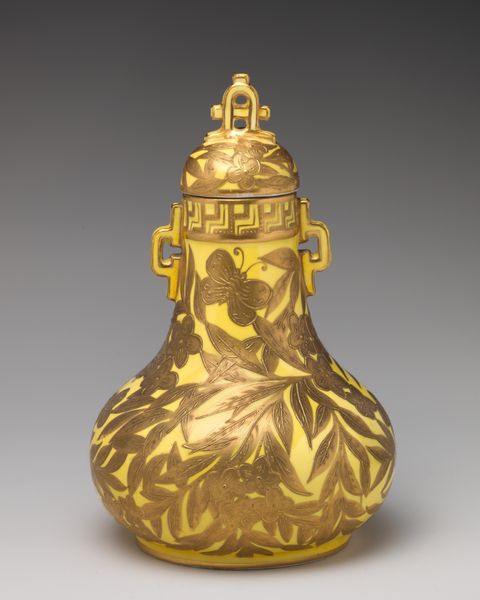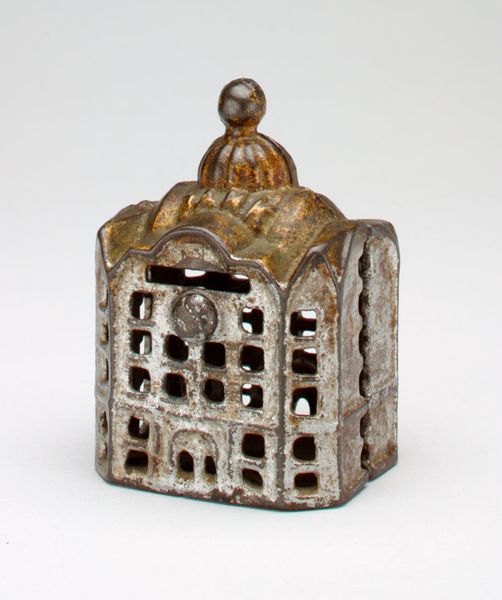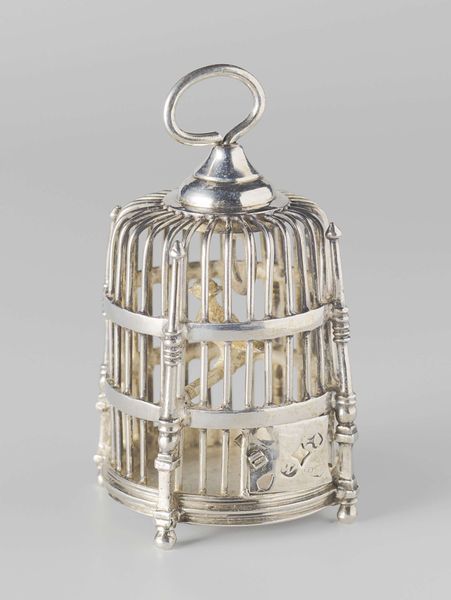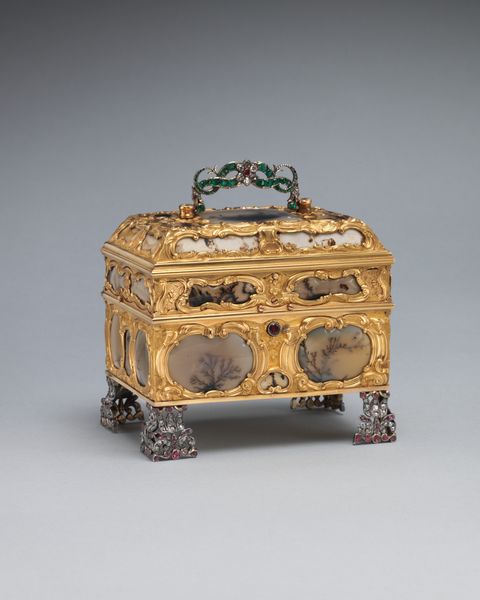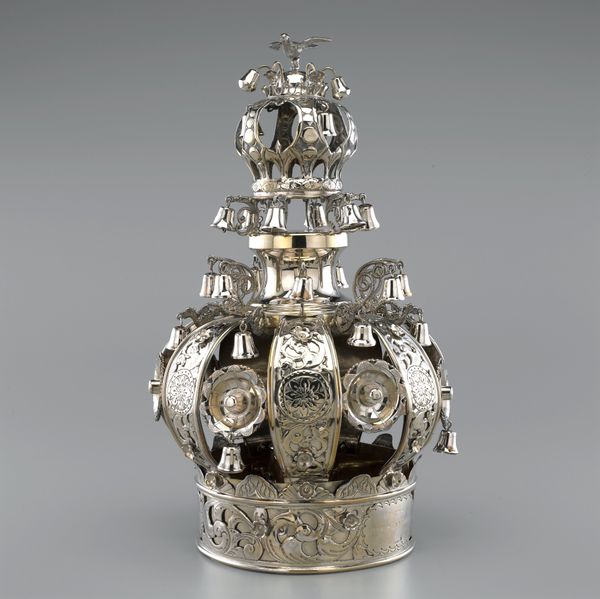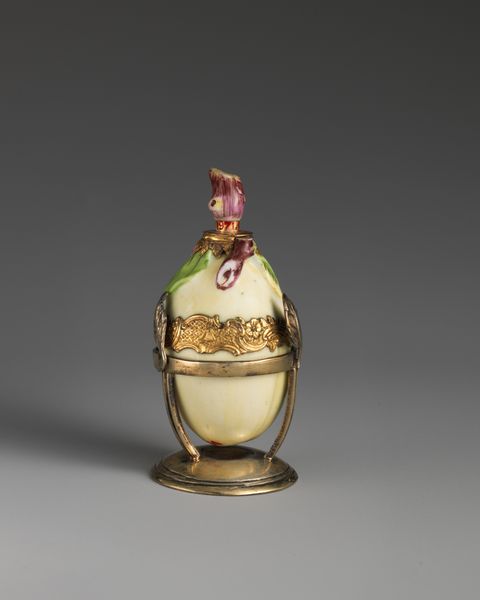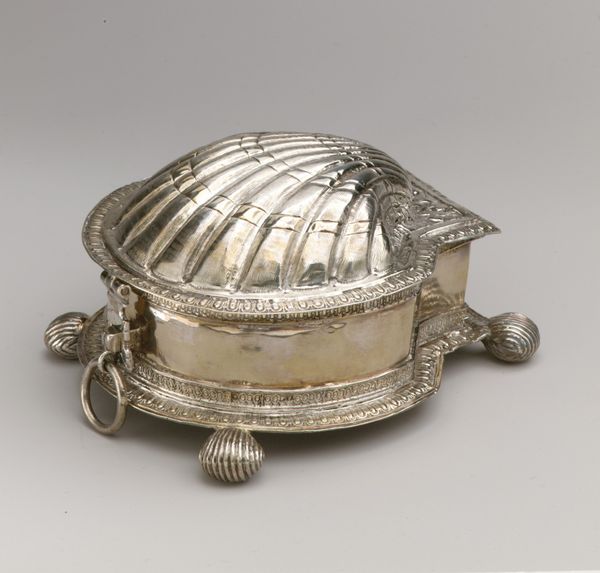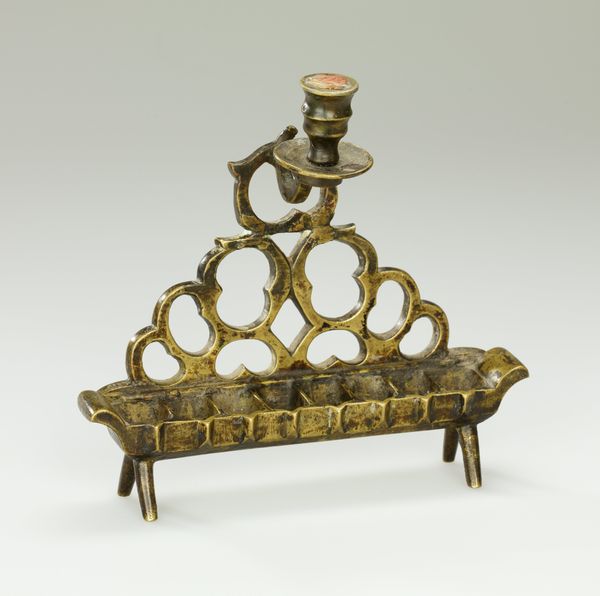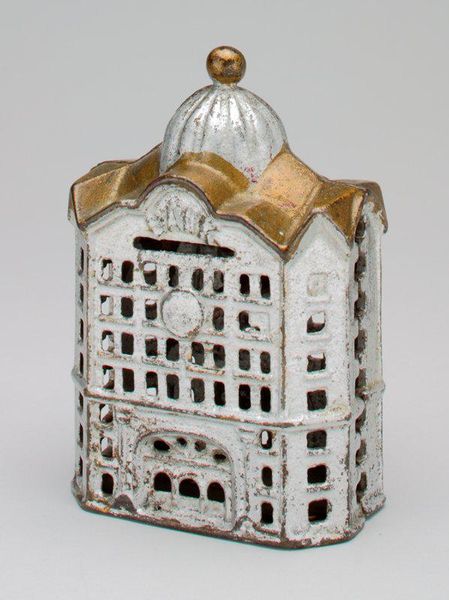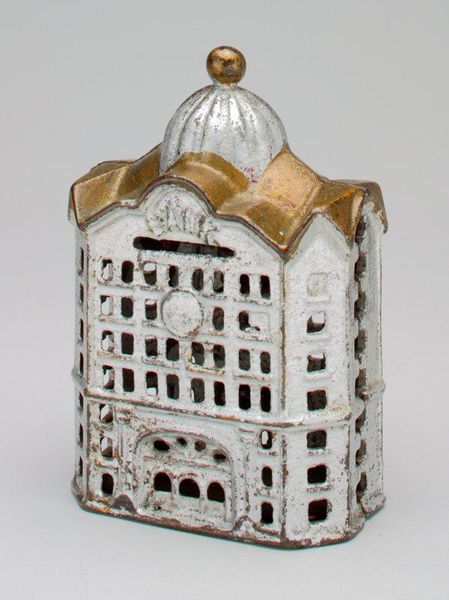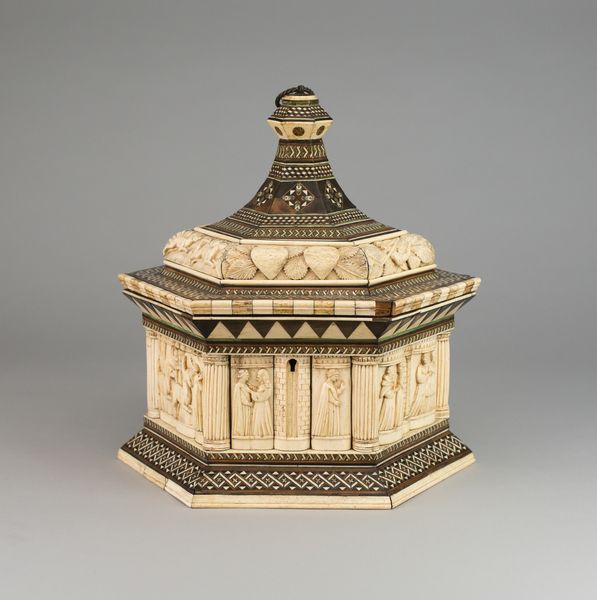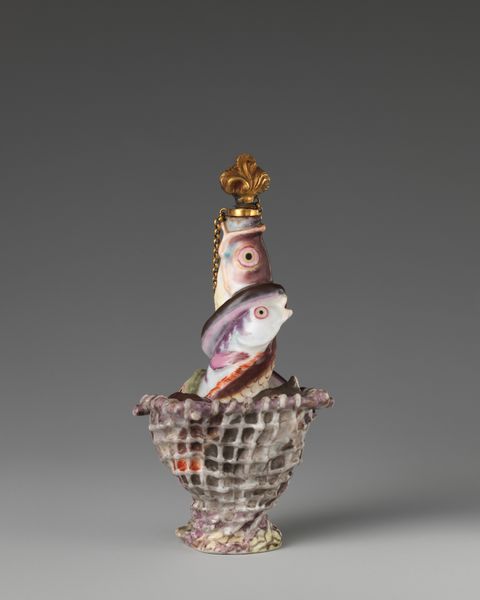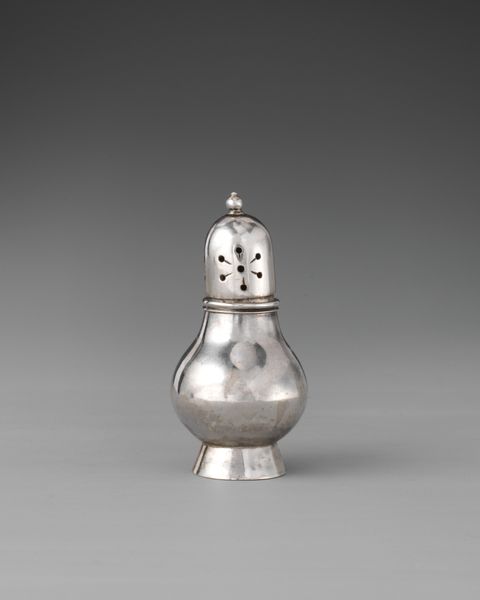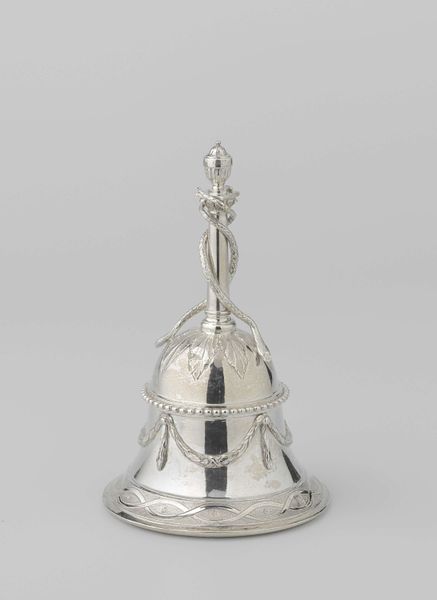
ceramic, porcelain, sculpture
#
ceramic
#
porcelain
#
sculpture
#
decorative-art
#
rococo
Dimensions: Height: 5/8 in. (1.6 cm)
Copyright: Public Domain
Curator: Look at this tiny thing, a miniature seal made by the Chelsea Porcelain Manufactory in the 18th century. It’s currently residing here at the Met. Editor: My first thought is “precious” and a little melancholy, like a gilded cage shrunk down to palm-sized helplessness. What does it symbolize? Curator: Well, it’s crafted from porcelain, a status symbol in itself, and shaped like a birdcage with the inscription "Par Amitie"—"For Friendship". This piece speaks volumes about the Rococo era’s obsession with delicate beauty and courtly love. Editor: Friendship… yet, a birdcage. Interesting tension there. I think about how these decorative objects, enjoyed by the elite, often glossed over very real systems of constraint and oppression for the less privileged, and sometimes served as a gift expressing “friendship”. I wonder what it really represented for women in that period? Curator: Exactly! Birds have often symbolized the soul or freedom. Placing that within a cage creates this visual paradox, a confined spirit. It suggests an intimacy offered as a gift of companionship, but does this seal depict a genuine, freely offered affection, or one dictated by social decorum, something expected rather than felt? Editor: And consider the artistry itself. This level of detail in miniature underscores how valued these ideals and messages were in their society. Was it about showing devotion, wealth, control, or even maybe stifled emotions through visual codes that required an education to interpret? Curator: I agree, and the use of gold accentuates its value, elevating friendship into something almost sacred, or at least, very, very precious. It’s as if they were trying to preserve a perfect sentiment in a gilded container. Editor: To see something as light and decorative also hints towards more constrained power relations, both for women in arranged unions and between imperial powers extracting raw materials to fuel decorative manufacture. Curator: Looking at it, the 'decorative-art' approach serves as both a reminder and perhaps a challenge: were its 18th-century owners as attuned to such layers as we are today? Editor: What seems at first a charming miniature encapsulates complex dynamics, hinting at what lies beneath pretty surfaces and societal pressures to maintain the performance of amitié. Curator: So, it's not just about a little cage but a much bigger, more nuanced story it tells—even across centuries. Editor: It definitely shifts my perception, reminding me how art, even at its most ornamental, invites critical questions of identity and power.
Comments
No comments
Be the first to comment and join the conversation on the ultimate creative platform.
